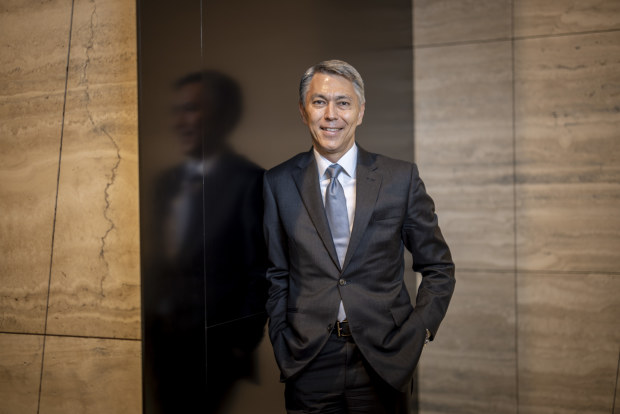Why BHP’s boss says gender targets are profitable

CEO male-female equality is still 50 years off, but the big miner’s chief says a better balance has helped boost its performance and returns.
At first glance, the 2023 financial year looked like a banner year for female chief executives. Telstra boss Vicki Brady, Coles Group’s Leah Weckert, ASX’s Helen Lofthouse, Xero’s Sukhinder Singh Cassidy and IDP Education’s Tennealle O’Shannessy joined Macquarie boss Shemara Wikramanayake and Woodside Energy’s Meg O’Neill as the leaders of ASX 100 companies.
But Susan Lloyd-Hurwitz, the president of Chief Executive Women and the former CEO of property giant Mirvac, remains frustrated by what CEW’s latest census suggests is happening beneath the surface.
“We absolutely have to acknowledge and celebrate the progress, but it’s still too slow. At this rate, it will be another 50 years before we get to gender equity in CEO positions.”
Lloyd-Hurwitz sees two key issues.
Firstly, across the ASX 300 men still hold 82 per cent of the key pipeline jobs – group executive, chief operating officer and chief financial officer roles.
The number of big-name companies where women hold less than 10 per cent of the executive leadership team is appalling: we’re looking at you, Domino’s Pizza, JB Hi-Fi, James Hardie, Goodman Group, Sigma Healthcare and fashion retailer Accent Group, which incredibly has no females on its ELT (executive leadership team).
Secondly, not enough companies across the ASX are setting gender targets: the global standard is 40 per cent female, 40 per cent male, and 20 per cent either. Lloyd-Hurwitz says data shows companies with targets are three times more likely to reach gender equity, given targets bring investor scrutiny and internal accountability.
“Nobody wants to be hired because they’re female, or because they’re from a culturally diverse background, or because they’re non-binary. Nobody wants to be that person. But the evidence is that targets do work. And we know also that diverse teams make better decisions, and they have better financial performance.”
BHP chief executive Mike Henry is a firm believer in the transformative power of targets; in 2016, his predecessor, Andrew Mackenzie set an ambitious target for gender equity by 2025, and last month BHP reported it had hit 35.2 per cent female participation – up from 17 per cent seven years ago, and within touching distance of its 40 per cent target.
Henry’s executive team is 50/50, and 40 per cent of all leadership roles are women. He says Mackenzie’s target has been vital to this transformation.
“That target unlocked the level of commitment and creativity that has allowed us to build momentum over the past six or seven years. I have to say the job has become easier over time, because it’s become something that’s second nature now within BHP.”
Henry’s reference to creativity is deliberate. While a huge focus has been on internal development of female leaders and changes to reduce biases in hiring, BHP has also looked to bring in mid-career female employees from outside mining.
“It’s been a real focus on bringing people in from other industries. That has had all sorts of benefits, but it gives us great access to a greater pool of talent.”
BHP is, of course, one of the most ESG-sensitive companies in the country, so Henry’s advocacy for gender targets is not surprising. But what’s fascinating is that he links improved gender equality to better outcomes for investors.
Since October 2016, BHP has delivered a total shareholder return of 19 per cent, compared to a TSR for the ASX 200 of 7 per cent. Clearly, there are a lot of elements in that, not least of which are commodity price movements and the big improvement in BHP’s capital discipline. But operational excellence has also lifted under Henry, and he’s certain better gender balance has played a role in that.
“Really, really, really importantly, as we’ve done this, company performance has improved,” Henry says. “So if you look at where we are now versus where we were, we’re safer, we’re productive, we’re executing better against strategy, and I don’t think it’s a coincidence that those things have happened in tandem.
“I don’t want to say it’s because there are more women in the company; rather, it’s because in order to achieve what we’ve achieved, we’ve had to have a more inclusive culture. That supports better ideas, more creativity, more discretionary effort, which all lead to a better performance.”
BHP’s experience should provoke real thought in boardrooms across the country. Targets matter, and they deliver for investors.
Source: The Australian Financial Review
London Build is the UK's largest and leading construction show. Officially awarded the Best Trade Show in the UK. London Build is co-located with the London Build Fire & Security Expo. Featuring 450+ Exhibitors, 700+ Speakers across 12 CPD Conference Stages, 35,000+ Registered Attendees, Networking Parties, Meet the Buyers, DJs, entertainment and so much more.

